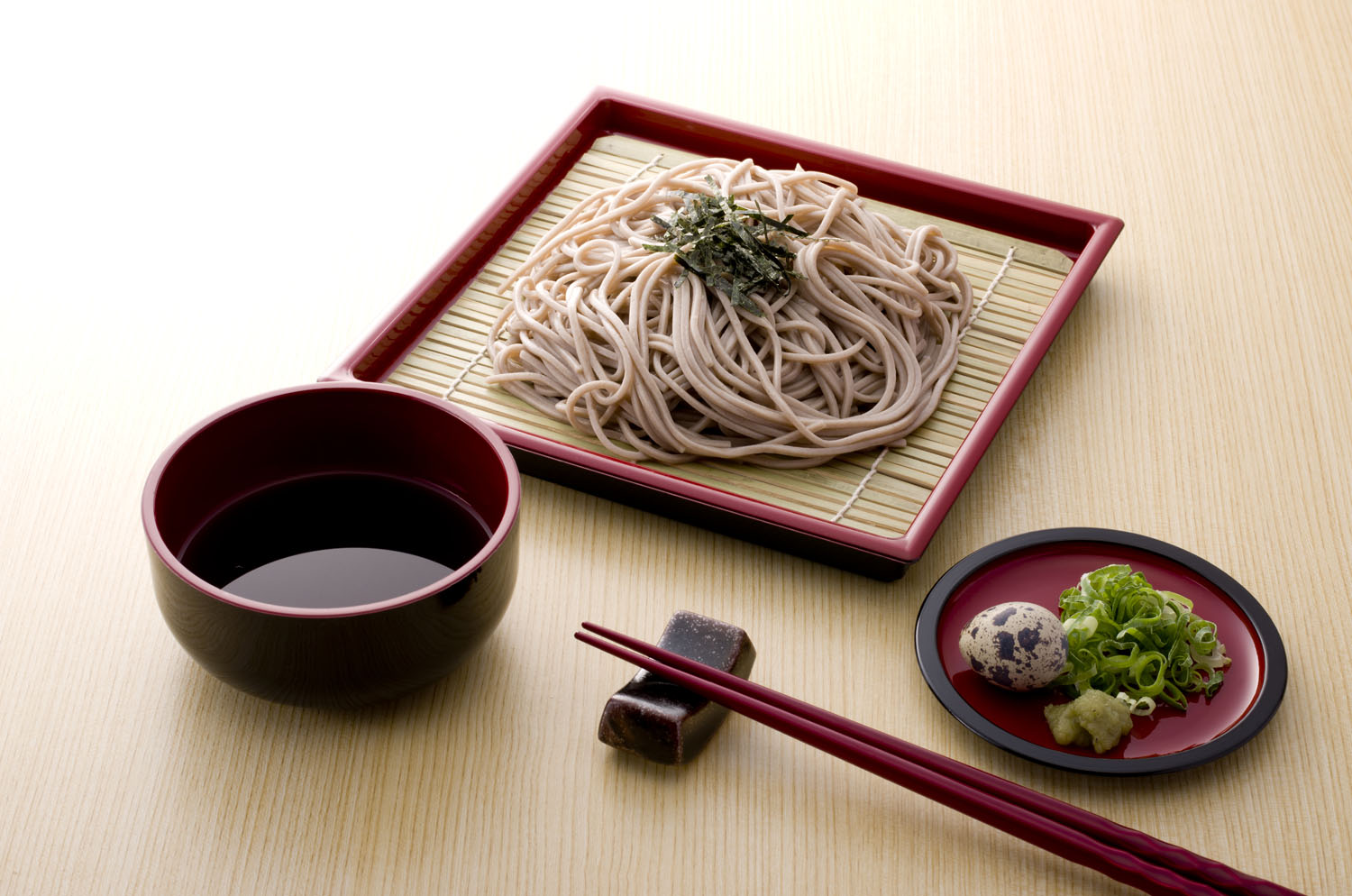

CUISINE SOBA – PREPARING AND SERVING
Is soba healthy?
Japanese soba is an excellent alternative to white noodles. It consists mostly of buckwheat flour, which contains a multitude of healthy nutrients. With high fibre and protein content, it supports digestion, while the presence of magnesium improves muscle regeneration. It is also a rich source of group B vitamins, phosphorus and zinc. Its low glycemic index is equally important for our health. Soba lowers cholesterol, regulates blood sugar level and is beneficial for the circulatory system.
However, before you buy the product, read the ingredients list first. Sometimes ‘soba’ is also used as a name for products which are made primarily of wheat flour, with buckwheat flour being a mere addition – about 15%. Such products will not be very healthy, and we can forget about the characteristic buckwheat aftertaste.
How to cook soba – boiling buckwheat water
Soba is a highly nutritious type of noodle. However, it loses many nutrients in cooking, leaving them in the water. This is why it should not be cooked too long (about 3 minutes) or it should be taken out immediately once soft. By rinsing soba with cold water you will avoid the sticking effect.
Sobayu (蕎麦湯) is the water that the noodles were boiled in. And though we are normally used to discarding noodle water, in this case it should be re-used. Buckwheat water is a repository of nutrients and as such an excellent base for a sauce or Japanese broth. Especially since the water has a distinct nutty aftertaste.
Cha soba – green-style
Soba usually means thin, long, grey to brown threads. The more buckwheat it contains, the more distinct the hue. However, there is also a green variety. While European noodles usually owe such colour to spinach, in the Japanese version the colour is the result of matcha.
Soba dishes
The Japanese love dishes with buckwheat noodles. This should come as no surprise since its nutty aroma goes well with other ingredients so popular in Japanese cuisine, such as sesame, ginger, garlic or chilli. Furthermore, it can be served cold – as a side with dipping sauce, hot – as the main ingredient of a dish, or in various Asian soups.
Soba served cold
On chilly days, soba is the crucial ingredient of the main courses or soups in Japan. In the summer, it is served cold. An example of a simple soba dish is wakame soba. First cook the noodles and let them cool. Soak wakame algae in lukewarm water. Wait until the sea-like smell is gone and they start to swell. Combine both ingredients, pour over with soy sauce, sprinkle with pepper, salt and sesame.
In the cold version, soba is often served with dipping sauce. This is especially popular in the north of Japan, where green cha soba is used for that purpose. The noodles are served then with various nut sauces. Usually encountered with mentsuyu, which is made of soy sauce and stock – dashi. Zaru soba, served with Japanese horseradish – wasabi, is a much spicier variant.
Mentsuyu soba
Soba with the mentsuyu sauce is the most Japanese version of this type of noodle. Just like soy sauce, mentsuyu can be bought ready-to-eat. It is most likely to be available in shops with Asian food or online markets. However, it is best to make it yourself and immerse in the incredible Japanese art of cooking. There are two types of mentsuyu. The first one is kaketsuyu – a noodle soup base. The other one, suketsuyu, is served in noodle dipping bowls.
To prepare mentsuyu, you will need typically Japanese ingredients. This will also require some shopping in professional Japanese shops.
The required products are:
- Sake – Japanese alcohol made from rice,
- Mirin – liquid spice made from sweet wine,
- Kombu – edible algae,
- Soy sauce,
- Katsuobushi – dried, fermented, smoked chopped tuna flakes.
Soba with dashi and tempura prawns
Japanese New Year’s Eve is a day of many traditions and rituals. The New Year’s ceremonies include eating soba dishes. Soba with dashi and tempura prawns is a popular variant for this occasion. Dashi is a distant equivalent of chicken broth but it tastes entirely differently – like fish. Its preparation requires such products as the already mentioned kombu algae and katsuobushi – the chopped dried tuna flakes. Some recipes also include soy sauce and shiitake mushrooms.
Preparing a delicious, crunchy tempura is an uncomplicated task. Mix half a glass of wheat flour and half a glass of corn flour with ice-cold water. Now coat the prawns in the dough and fry them in the wok until golden brown and crunchy. Remember that the dough should be slightly thicker for sea food and oily fish.
Summary
Japanese cuisine is recognised as one of the healthiest in the world, which is not surprising considering that soba is the main ingredient of numerous dishes. People from the Country of Cherry Blossoms love these buckwheat noodles not only for their versatility. The key to the popularity of soba is the combination of its unique nutty taste with healthy nutrients.























